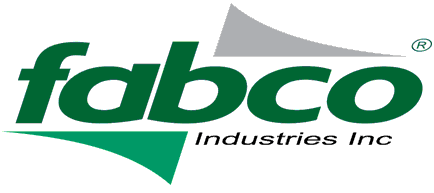Storm drain solutions are required to avoid hefty fines. In 2015, stormwater fines and compliance directives totaled over 9 billion dollars throughout the country. In 2016, that figure is estimated to grow. In response to this incredible price tag, FABCO has helped create the SWEPE PROGRAM (SWEPE means StormWater Environmental Pollution Extraction). This innovative program is a cost-effective configuration of products and services that successfully deals with stormwater compliance problems and storm drain solutions.

Environmental agencies police all water entering municipal stormwater infrastructure. They test for stormwater pollution entering these public aquifers and waterways through dry wells or stormwater inlets. Pollution left unfiltered can create health problems as well as damage to the ecological system, resulting in fines that can effect your financial status which require storm drain solutions.
As Allan Leon of Leon Petroleum states, “We have learned in the past that it is much less expensive to install the filters and exchange them on a regular basis than it is to remediate the soil. Also the EPA and DEC are requiring that you remediate these dry wells or they can result in fines.”
The SWEPE Program helps protect both you from fines and local drinking water from pollutants by using specially designed products and services. This program filters polluted stormwater before it enters your inlet and insures storm drain solutions.
The program requires no demolition. No asphalt or concrete needs to be hammered out. Your business and parking lots will not be effected by the SWEPE installation. Afterwards, typical vehicle traffic and debris, including hydrocarbons, sediments, organics, greases, heavy metals, and bacteria are captured. They never enter the stormwater system.
Get The SWEPE today. Visit fabco-industries.com to get more information.
Storm Drain Solutions Reference
BEST MANAGEMENT PRACTICES (BMPs) Retai l Gas Stations Fuel dispensing areas, air/water supply areas, asphalt or concrete pads, dumpsters, and trash bins at gas stations have the potential to pollute storm water runoff with gasoline, oil, grease, automotive fluids, and trash. Storm water runoff can pick up and wash these pollutants into the City’s storm drainage system, which flows directly into our streams and coastal waters.
BMPs, simple and effective methods to prevent the pollution of storm water, should be implemented by gas stations to prevent pollutants from gas station operations and activities from being picked up by storm water. Implementing storm water BMPs is a vital part of protecting Hawaii’s waters for life. Suggested BMPs for operations and maintenance at retail gas stations are included in this brochure and are intended for vehicle fueling stations and those with a convenience store.
Rain falling in urban areas flows along streets and gutters, and collects in drain inlets and catch basins. Storm water is then carried by drain pipes and channels into streams and the ocean. Dirt, debris, grime, automotive fluids, and other such loose materials on the ground can be picked up by storm water and end up polluting our island waters. Streams and oceans are homes to fish, plants, and other aquatic life, and serve as major recreational areas for the Oahu community. They offer opportunities for activities such as fishing, swimming, surfing, diving, and paddling.
Keeping storm water as clean as possible is in everyone’s interest. The information in this brochure provides guidance on how to protect our streams and the ocean by reducing storm water pollution.
DESIGN Considerations General • Cover the following areas with a roof or canopy: – Fuel dispensing areas – Waste receptacle – Air/water supply areas
• Position roof downspouts away from the fueling area.
• Install a low containment berm around the waste receptacle and air/water supply areas.
• Fit underground tanks with spill containment and overfill prevention systems. Surfacing
• Pave fuel dispensing areas with Portland cement concrete to prevent fuel from infiltrating into the ground.
• Use asphalt sealant to protect asphalt paved areas surrounding the fueling area. Grading
• Slope fuel dispensing, outdoor trash receptacle, and air/water supply areas to prevent ponding, run-on, and runoff of storm water.
• Grade fueling areas to drain towards a dead-end sump or landscaped area. OPERATIONS AND MAINTENANCE Recommendations General
• Use dry methods to clean up leaks and spills immediately. Locate spill kits in easily accessible areas.
• Develop and implement a Spill Response Plan for spill prevention and response.
• Develop BMPs for the operations at your facility to prevent storm water pollution.
• Provide regular training on proper waste handling/ disposal methods, the spill cleanup procedures, and BMPs.
• Label all drains using paint or stencil to indicate whether flow is to the storm drain, sewer, or oil/water separator.
• Inspect and clean drains on a regular basis.
• Routinely inspect air/water supply areas and clean up any leaks or drips Fuel Dispensing Areas
• Keep fuel dispensing areas clean by using dry methods such as sweeping for debris, or using rags and absorbents for leaks and spills.
• Temporarily plug the downstream drain if washing of the area is needed. Contain, pump out, and properly dispose of the collected water.
• Use vapor recovery nozzles to help control drips and air pollution. • Post signs at the fuel dispenser warning against “topping off” of fuel tanks.
• Ensure tank truck personnel are present at all times when transferring fuel from the truck to the station’s fuel tank. Check that the delivery truck is equipped with a cam-lock system.

